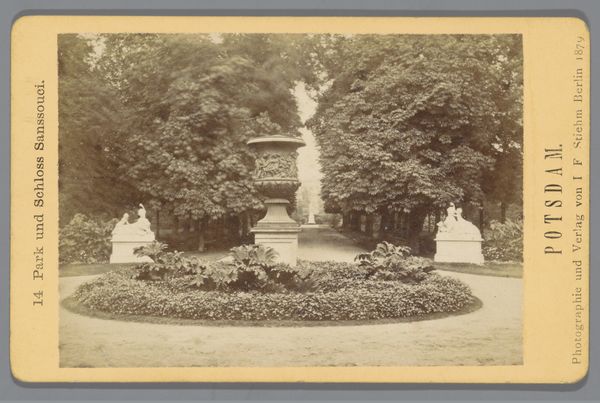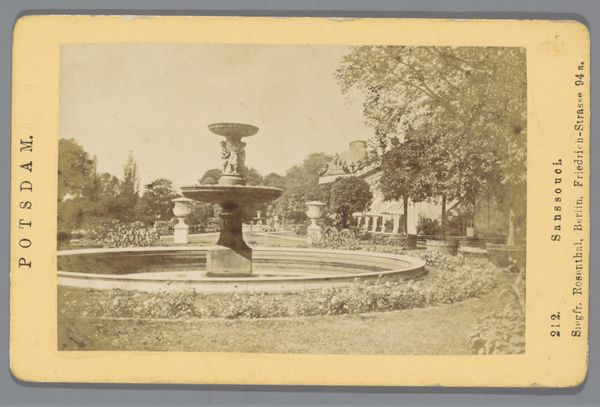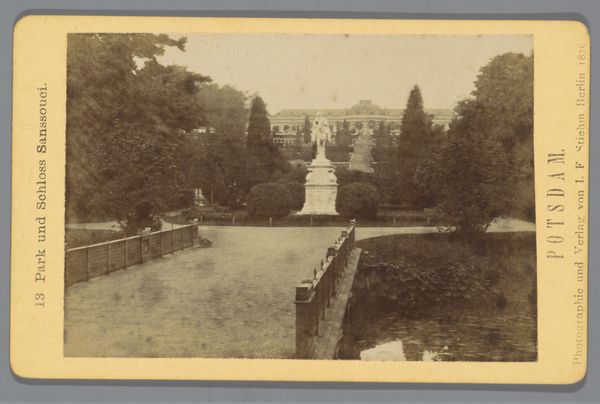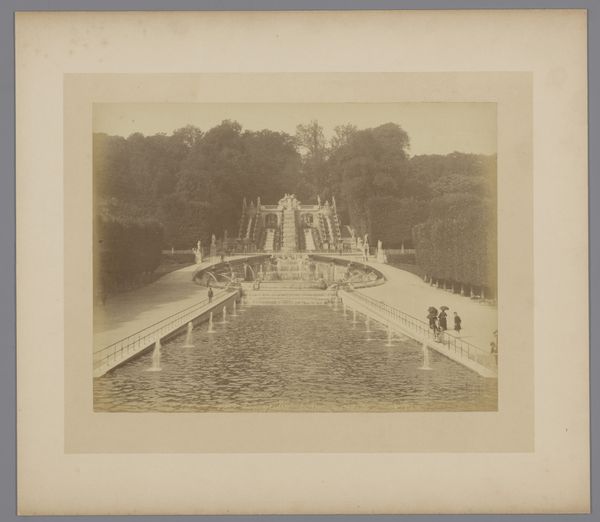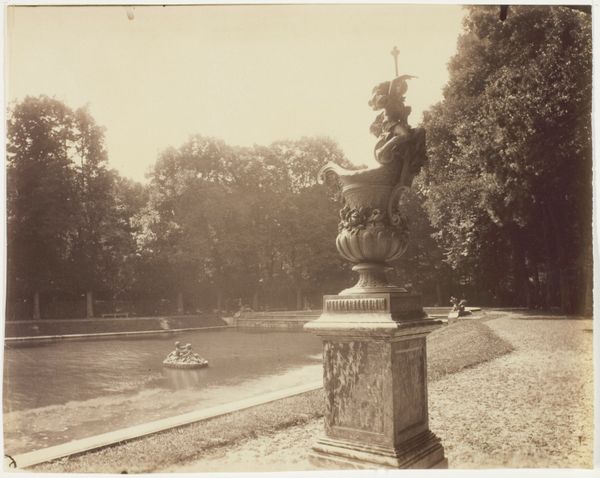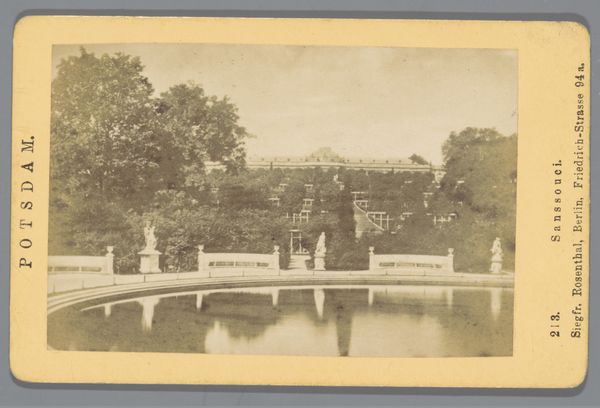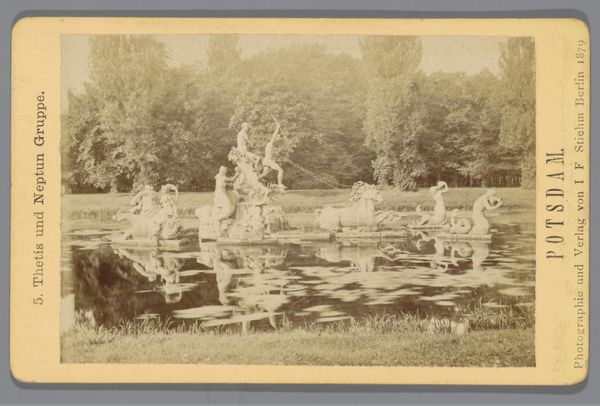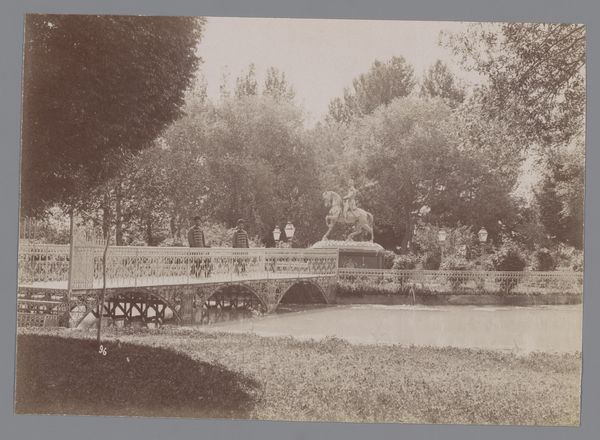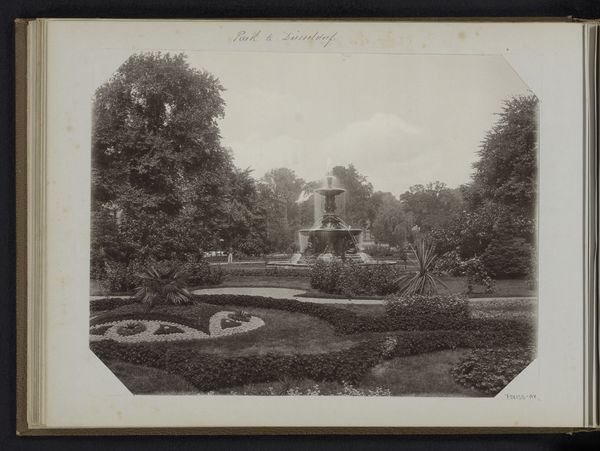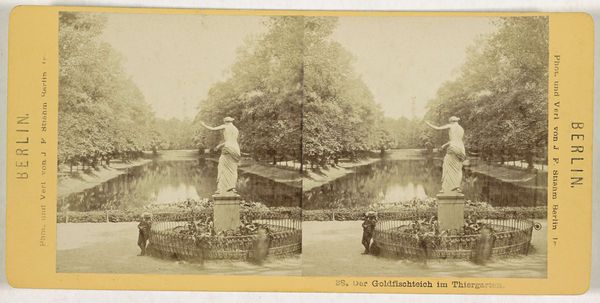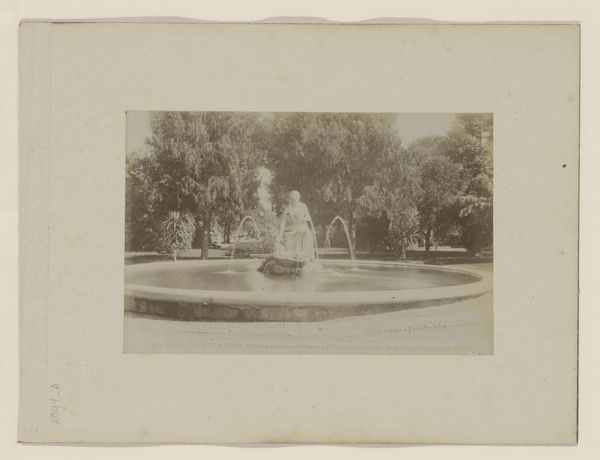
Dimensions: height 67 mm, width 106 mm
Copyright: Rijks Museum: Open Domain
Curator: This gelatin silver print, "Beeld met vijver in de Tiergarten, Berlijn" by Johann Friedrich Stiehm, dates back to 1880 and offers a peek into Berlin's Tiergarten. The photograph showcases a statue positioned by a pond, reflecting a peaceful interaction between art and nature. Editor: It’s a rather melancholic scene, isn't it? The soft focus and the muted tones give the entire photograph a subdued atmosphere, a palpable sense of quiet contemplation. Curator: The albumen print is part of a larger series of Berlin landscapes produced by Stiehm and others, which suggests a commercial market and photographic tourism during the late 19th century, feeding a growing public fascination with travel. Editor: Yes, I find it fascinating how Stiehm positions this sculpture, likely a piece reflecting neoclassical ideals of beauty, within a rapidly modernizing urban landscape. What statement might Stiehm have intended by choosing to place it within this natural setting, framed by the rigidity of the artificial pond? Curator: Indeed, the production methods here also challenge simple classifications. Though photograph is technically reproducible, hand applied processes result in prints, making each final version a kind of singular multiple that combines technological advance with human artisanship. Editor: I'd be interested in researching to what extent this seemingly placid representation of nature is actually obscuring inequalities inherent in Berlin at the time. Who was able to access and experience places like the Tiergarten, and what does it say about social strata during that period? Curator: The act of Stiehm selecting this particular subject itself, from this vantage point, also invites further inquiry into the production, labor, and industrial processes that afforded photographers opportunities to record and distribute such images. Editor: It reminds me that photographs such as this often function as documents, offering an entry point to broader social, historical, and material contexts of their era. They are useful resources for expanding intersectional discourses in understanding art. Curator: Looking at this picture once more, it leaves me thinking how material investigations of this sort offer important windows into how landscapes function as commodities across different moments in time. Editor: It's clear how revisiting these artworks and viewing them through the lenses of process and context yields fresh perspectives on history.
Comments
No comments
Be the first to comment and join the conversation on the ultimate creative platform.
